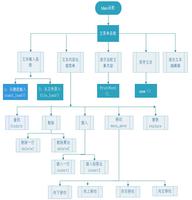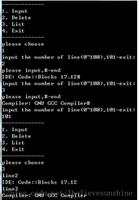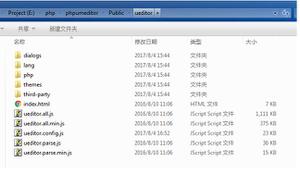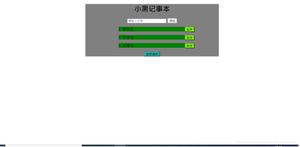架构师内功心法,参与富文本编辑器开发的备忘录模式详解

备忘录模式(Memento Pattern)又称为快照模式(Snapshot Pattern)或者令牌模式(Token Pattern),是指在不破坏封装的前提下,捕获一个内部状态,并在对象之外保存这个状态。这样以后就可将该对象恢复到原先保存的状态。
在软件系统中,备忘录模式为我们提供了一种“后悔药”的机制,它通过存储系统各个历史状态的快照,使得我们可以在任意时刻将系统回滚到某一个历史状态。
一、备忘录模式的应用场景
我们机会天天都在使用备忘录模式,比如使用Git、SVN提供一种代码版本撤回的功能。还有游戏的存档功能,通过将游戏当前进度存储到本地文件系统或数据库中,使得下次继续游戏时,玩家可以从之前的位置继续进行。
备忘录模式适用于以下两个场景:
- 需要保存历史快照的场景;
- 希望在对象之外保存状态,且除了自己其它类对象无法访问状态保存具体内容。
备忘录模式主要包含三种角色:
- 发起人角色(Orgainator):负责创建一个备忘录,记录自身需要保存的状态,具备状态回滚功能;
- 备忘录角色(Memento):用于存储发起人的内部状态,且可以防止发起人以外的对象进行访问;
- 备忘录管理员(Caretaker):负责存储,提供管理备忘录,无法对备忘录内容进行操作和访问。
1.1 利用压栈管理落地备忘录模式
我们在网页上写文章或者博客都使用过富文本编辑器,它会附带草稿箱、撤销等这样的功能。
下面使用代码来实现这样的功能。假设我们需要发布一篇文章,这篇文章的编辑过程需要花很长的时间,编辑的过程中会不停的撤销,保存草稿、修改。首先创建发起人角色编辑器 Editor 类:
public class Editor { private String title;
private String content;
private String imgs;
public Editor(String title, String content, String imgs) {
this.title = title;
this.content = content;
this.imgs = imgs;
}
public ArticleMemento save2Memento() {
ArticleMemento articleMemento =
new ArticleMemento(this.title, this.content, this.imgs);
return articleMemento;
}
public void undoFromMemento(ArticleMemento articleMemento) {
this.title = articleMemento.getTitle();
this.content = articleMemento.getContent();
this.imgs = articleMemento.getImgs();
}
public String getTitle() {
return title;
}
public void setTitle(String title) {
this.title = title;
}
public String getContent() {
return content;
}
public void setContent(String content) {
this.content = content;
}
public String getImgs() {
return imgs;
}
public void setImgs(String imgs) {
this.imgs = imgs;
}
@Override
public String toString() {
return "Editor{" +
"title="" + title + """ +
", content="" + content + """ +
", imgs="" + imgs + """ +
"}";
}
}
然后创建备忘录角色 ArticleMemento 类:
public class ArticleMemento { private String title;
private String content;
private String imgs;
public ArticleMemento(String title, String content, String imgs) {
this.title = title;
this.content = content;
this.imgs = imgs;
}
public String getTitle() {
return title;
}
public void setTitle(String title) {
this.title = title;
}
public String getContent() {
return content;
}
public void setContent(String content) {
this.content = content;
}
public String getImgs() {
return imgs;
}
public void setImgs(String imgs) {
this.imgs = imgs;
}
@Override
public String toString() {
return "ArticleMemento{" +
"title="" + title + """ +
", content="" + content + """ +
", imgs="" + imgs + """ +
"}";
}
}
创建备忘录管理角色草稿箱 DraftBox 类:
public class DraftBox { private final Stack<ArticleMemento> STACK = new Stack<>();
public ArticleMemento getMemento() {
ArticleMemento articleMemento = STACK.pop();
return articleMemento;
}
public void addMemento(ArticleMemento articleMemento) {
STACK.push(articleMemento);
}
}
草稿箱的Stack类是Vector的一个子类,它实现了一个标准的后进先出的栈。
二、备忘录模式在源码中的体现
备忘录模式在框架源码中的应用还是比较少见的,主要还是结合具体的应用场景来使用。spring中的webfolw源码StateManageableMessageContext接口,我们来看它的源码:
public interface StateManageableMessageContext extends MessageContext { /**
* Create a serializable memento, or token representing a snapshot of the internal state of this message context.
* @return the messages memento
*/
public Serializable createMessagesMemento();
/**
* Set the state of this context from the memento provided. After this call, the messages in this context will match
* what is encapsulated inside the memento. Any previous state will be overridden.
* @param messagesMemento the messages memento
*/
public void restoreMessages(Serializable messagesMemento);
/**
* Configure the message source used to resolve messages added to this context. May be set at any time to change how
* coded messages are resolved.
* @param messageSource the message source
* @see MessageContext#addMessage(MessageResolver)
*/
public void setMessageSource(MessageSource messageSource);
}
createMessagesMemento()创建一个消息备忘录。可以看一下实现类:
public class DefaultMessageContext implements StateManageableMessageContext { private static final Log logger = LogFactory.getLog(DefaultMessageContext.class);
private MessageSource messageSource;
@SuppressWarnings("serial")
private Map<Object, List<Message>> sourceMessages = new AbstractCachingMapDecorator<Object, List<Message>>(
new LinkedHashMap<Object, List<Message>>()) {
protected List<Message> create(Object source) {
return new ArrayList<Message>();
}
};
/**
* Creates a new default message context. Defaults to a message source that simply resolves default text and cannot
* resolve localized message codes.
*/
public DefaultMessageContext() {
init(null);
}
/**
* Creates a new default message context.
* @param messageSource the message source to resolve messages added to this context
*/
public DefaultMessageContext(MessageSource messageSource) {
init(messageSource);
}
public MessageSource getMessageSource() {
return messageSource;
}
// implementing message context
public Message[] getAllMessages() {
List<Message> messages = new ArrayList<Message>();
for (List<Message> list : sourceMessages.values()) {
messages.addAll(list);
}
return messages.toArray(new Message[messages.size()]);
}
public Message[] getMessagesBySource(Object source) {
List<Message> messages = sourceMessages.get(source);
return messages.toArray(new Message[messages.size()]);
}
public Message[] getMessagesByCriteria(MessageCriteria criteria) {
List<Message> messages = new ArrayList<Message>();
for (List<Message> sourceMessages : this.sourceMessages.values()) {
for (Message message : sourceMessages) {
if (criteria.test(message)) {
messages.add(message);
}
}
}
return messages.toArray(new Message[messages.size()]);
}
public boolean hasErrorMessages() {
for (List<Message> sourceMessages : this.sourceMessages.values()) {
for (Message message : sourceMessages) {
if (message.getSeverity() == Severity.ERROR) {
return true;
}
}
}
return false;
}
public void addMessage(MessageResolver messageResolver) {
Locale currentLocale = LocaleContextHolder.getLocale();
if (logger.isDebugEnabled()) {
logger.debug("Resolving message using " + messageResolver);
}
Message message = messageResolver.resolveMessage(messageSource, currentLocale);
List<Message> messages = sourceMessages.get(message.getSource());
if (logger.isDebugEnabled()) {
logger.debug("Adding resolved message " + message);
}
messages.add(message);
}
public void clearMessages() {
sourceMessages.clear();
}
// implementing state manageable message context
public Serializable createMessagesMemento() {
return new LinkedHashMap<Object, List<Message>>(sourceMessages);
}
@SuppressWarnings("unchecked")
public void restoreMessages(Serializable messagesMemento) {
sourceMessages.putAll((Map<Object, List<Message>>) messagesMemento);
}
public void setMessageSource(MessageSource messageSource) {
if (messageSource == null) {
messageSource = new DefaultTextFallbackMessageSource();
}
this.messageSource = messageSource;
}
// internal helpers
private void init(MessageSource messageSource) {
setMessageSource(messageSource);
// create the "null" source message list eagerly to ensure global messages are indexed first
this.sourceMessages.get(null);
}
public String toString() {
return new ToStringCreator(this).append("sourceMessages", sourceMessages).toString();
}
private static class DefaultTextFallbackMessageSource extends AbstractMessageSource {
protected MessageFormat resolveCode(String code, Locale locale) {
return null;
}
}
}
主要逻辑就相当于是给Message留一个备份,以备恢复之用。
三、备忘录模式的优缺点
优点:
- 简化发起人职责,隔离状态存储与获取,实现了信息的封装,客户端无需关心状态的保存细节;
- 提供状态回滚功能。
缺点:
消耗资源:如果需要保存的状态过多时,每一次保存都会消耗很多内存。
以上是 架构师内功心法,参与富文本编辑器开发的备忘录模式详解 的全部内容, 来源链接: utcz.com/z/514624.html









